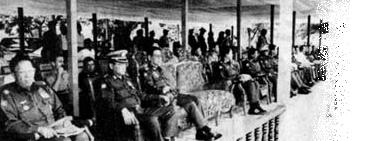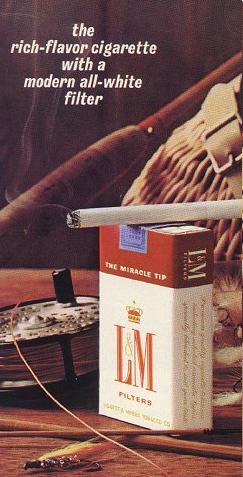HOME >>
Chemicals
>> Phenylacetic Acid
![CAS number [103-82-2]Phenylacetic acid](new%20update1/phenyle%20acetic%20acid_top%20bar.jpg)

|
Phenylacetic acid

|
CAS number
[103-82-2]
IUPAC name
Phenylacetic acid
MOL WT. 136.15
H.S. CODE : 2916.33
Appearence : white crystalline powder
Assay : 99.00 to 100.00 %
Heavey metals : <10.00 ppm
Food Chemicals Codex Listed : Yes
Melting point : 76.00 to 78.00 °C. @ 760.00 mm Hg
Boiling point : 265.00 to 266.00 °C. @ 760.00 mm Hg
Boiling point : 142.00 to 143.00 °C. @ 10.00 mm Hg
Congealing point : 75.80 °C.
Vapor pressure : 1.00000 mm/Hg @ 97.00 °C.
Bapor density : 4.0 ( Air = 1 )
Flash point : 212.00 °F. TCC ( 100.00 °C. )
logP (o/w) : 1.41
shelf life : 24.00 month (s) or longer if stored properly.
storage : store in cool, dry place in tightly sealed containers,
protected from heat and light.
Identifiers
SMILES c1ccccc1CC(=O)O
TRANSPORTATION
PACKING 25kgs in bag
HAZARD CLASS
UN NO.
|
Properties
Molecular formula C8H8O2
Molar mass 136.15 g/mol
Density 1.0809 g/cm3
Melting point 76-77 °C
Boiling point 265.5 °C
Hazards
MSDS External MSDS
Phenylacetic acid (abr. PAA and synonyms are: α-toluic acid,
benzeneacetic acid, alpha tolylic acid, 2-phenylacetic acid) is an
organic compound containing a phenyl functional group and an acetic
acid functional group.
Because it is used in the illicit production of phenylacetone (used
in the manufacture of meth/amphetamines), it is subject to controls
in the United States.
Physical data
Appearance: white crystals with a honey-like odour
Melting point: 77 C
Boiling point: 265 C
Vapour density:
Vapour pressure: 1 mm Hg at 97 C
Density (g/cm3): 1.228
Flash point: 190
Explosion limits:
Autoignition temperature:
Phenylacetic acid ≥ 99%
Stability
Stable. Incompatible with strong oxidizing agents.
Toxicology
Harmful by ingestion, inhalation or through skin contact. Severe eye
irritant. Skin and respiratory irritant. May act as a teratogen.
Oral rat LD50 2250 mg/Kg
Toxicity data
(The meaning of any abbreviations which appear in this section is
given here.)
ORL-RAT LD50 2250 mg kg-1
ORL-GPG LD50 2250 mg kg-1
IPN-RAT LD50 1600 mg kg-1
Risk phrases
(The meaning of any risk phrases which appear in this section is
given here.)
R20 R21 R22 R36 R37 R38.
Personal protection
Safety glasses. Adequate ventilation.
NFPA
RATINGS Health: 1 Flammability: 1 Reactivity: 0 FLASH POINT 190 C
STABILITY Stable under ordinary
conditions
GENERAL DESCRIPTION & APPLICATIONS
most important hazard(s) : Xi - Irritant
R 36/37/38 - Irritating to eyes, respiratory system, and skin.
S 02 - Keep out of the reach of children.
S 24/25 - Avoid contact with skin and eyes.
S 26 - In case of contact with eyes, rinse immediately with plenty
of water and seek medical advice.
S 37/39 - Wear suitable gloves and eye/face protection.
Human experience : 2 % solution: no irritation or sensitization.
Oral Toxicity(LD50) :
Oral-Rat >5000.00 mg/kg
(Keating, 1972c)
Gavage-Guineapig [sex: M,F] 2250.00 mg/kg
(Zaitsev & Rakhmanina, 1974)
Gavage-Mouse [sex: M,F] 2250.00 mg/kg
(Zaitsev & Rakhmanina, 1974)
Gavage-Rat [sex: M,F] 2250.00 mg/kg
(Zaitsev & Rakhmanina, 1974)
Dermal Toxicity(LD50) :
Skin-Rabbit >5000.00 mg/kg
Food and Cosmetics Toxicology. Vol. 13, Pg. 901, 1975.
Subcutaneous-Mouse 1500.00 mg/kg
Inhalation Toxicity(LC50) :
Not determined
GHS classification
Signal: Warning
Causes mild skin irritation
Causes eye irritation
Harmful to aquatic life
***** The substance is harmful to aquatic organisms.
Quality Standard: Enterprises standard
Use: As chemical intermediates
Storage: avoid heat and moisture
Packing: 25kgs/bag or 25kgs/drum
Delivery: 1-2 Weeks.

 Note:
These API/ chemicals are designated as those that are used in
the manufacture of the controlled substances and are important to
the manufacture of the substances. For any (Control Substance)
products Import and Export *** subjected to your country government
laws /control substance ACT. Note:
These API/ chemicals are designated as those that are used in
the manufacture of the controlled substances and are important to
the manufacture of the substances. For any (Control Substance)
products Import and Export *** subjected to your country government
laws /control substance ACT.
Note /Government Notification: N/A
New Chemicals
Phenyl acetic acid,
3,4-methylenedioxyphenyl-2-propanone,
Piperidine and its salts,
Methylamine,
Propionic anhydride,
Para Methoxy Phenyl Acetone,Para Methoxy Phenyl Acetic Acid,
Benzene,
Benzyl methyl ketone,
3'-Aminoacetophenone,
Ethylamine,
Isosafrole,
Piperonal,
N-methylpseudoephedrine
|

|
Applications
Phenylacetic acid is used in some perfumes, possessing a
honey-like odour in low concentrations, and is also used in
penicillin G production. It is also employed to treat type II
hyperammonemia to help reduce the amounts of ammonia in a
patient's bloodstream by forming phenylacetyl-CoA which then
reacts with nitrogen-rich glutamine to form
phenylacetylglutamine. This compound is then secreted by the
patient's body.
Phenylacetic acid is a white crystals with a disagreeable odor;
boiling point 262 C; soluble in alcohol and ether. It serves as
an ingredient in perfume to provide honey-like odor. It is found
as a moiety in some alkaloids and plant hormones. It is formed
as catabolite of phenylalanine. In toluic acid name system,
phenylacetic acid is alpha-toluic acid which one of the hydrogen
atoms in the methyl group has been substituted instead of the
substitution in the benzene ring.
Substituted phenylacetic acid molecule at alpha position and
phenylacetate esters can serve as a drug with a wide variety of
effects including anticholinergic, muscarinic antagonist,
antidote to cholinesterase inhibitors or toxins, cycloplegic and
mydriatic. Phenylacetic acid is used to prepare a nonsteroidal
antiinflammatory drug like diclofenac. It is used the
manufacture of penicillin. Mandelic Acid, phenylglycollic acid,
can be produced from phenylchloracetic acid.
|
|
 Phenylacetic Acid
Phenylacetic Acid |
|


